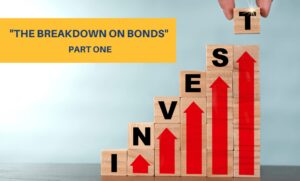 Recently I sat down with a new prospective client we’ll call Tim (not his real name). Tim is in a conundrum. At age 66, he is worried about inflation, preserving his assets, and troubled by the volatility of the stock market. Frankly, he is not alone in having these concerns. In just the last two weeks, I have met three others who have each moved a substantial portion of their portfolio out of equities.
Recently I sat down with a new prospective client we’ll call Tim (not his real name). Tim is in a conundrum. At age 66, he is worried about inflation, preserving his assets, and troubled by the volatility of the stock market. Frankly, he is not alone in having these concerns. In just the last two weeks, I have met three others who have each moved a substantial portion of their portfolio out of equities.
Investors, especially those in retirement, face a seemingly impossible balancing act to protect or grow their purchasing power in this low interest rate, high inflation, and volatile investment environment. Tim’s solution prior to our conversation – and more an ambivalent compromise – was to allocate 70% of his retirement assets to bonds and other defensive investments, and only leave 30% in equities. My question after hearing Tim’s action, “and then what?”
While I understand Tim’s concerns, is it wise overall to put a bond “Band-Aid” on our portfolios and call it a day? From my 30+ years of study, research, and real-life experience, I would suggest the answer is “No!” Why not? Keep reading . . .
How Do Bonds Work? The Basics:
Traditional “fixed-rate bonds” are referred to as “fixed income.” And, for simplicity, let’s ignore the fancy bond “cousins” like floating rate, inflation protected, or zero-coupon bonds, etc. at least for now. Bonds provide fixed interest payments to the investor throughout the life of the bond. When they “mature,” they pay the investor the stated face value of the bond. If you understand these two aspects, congratulations – you basically understand bonds at a high level! (As usual, there is a little more to the story than that, but you have a grasp of the fundamentals.)
Are Bonds Really A “Safe” Investment?
Bonds are frequently recommended as a “safe” investment when investment markets get turbulent. They are the asset class we’re told to go to for “reducing risk” in our portfolios. This perception may also stem from U.S. Treasury Securities being commonly referred to as “risk-free.” While its true bonds may reduce certain risks in the context of a portfolio of various asset classes, on their own, they still possess different types of risk (yep, even some U.S. Treasury Securities).
Perhaps we accept the conventional advice that bonds are a “go to investment” during times of instability because we don’t hear much about the risk of bonds. As well, no offense intended, but could it be that very few really understand how bonds work to actually discuss them intelligently?
A third point might be . . . and let’s be honest . . . bonds are boring! When was the last time you overheard anyone having a spirited conversation about “duration risk” at a dinner party? (Or maybe that’s just my circle of professional friends!) Instead, people love talking about their Tesla, Apple and Alphabet stock, or their high performing/low volatility exchange-traded fund strategy (more about this in our next newsletter). Many accept the advice to exchange equities for bonds in times of elevated market volatility, without understanding the potential dangers bonds can bring to a portfolio of investments.
And, while I am thinking about it, who has heard the advice to add a greater percentage of bonds to your portfolio as you prepare for retirement? Why? As suggested above, bonds are often riskier than most understand. It may make sense to pull back somewhat on assets whose market values jump all around. Having a broad allocation, however, to various types of assets is perhaps better counsel overall than just retreating to bonds in times of market unrest.
Do Bonds “Wiggle”?
Next point – bonds DO “wiggle.” There, I’ve said it! Now, what do I mean by that?
While the bond “coupon” (the payment to the investor) is fixed, and the amount due to the investor at maturity is fixed, the value or price of the bond at any given time is not! It “wiggles.”
For example, let’s say you buy a $10,000 bond from the U.S. government, or a corporation, municipality, school, etc.
- You may pay less than – more than – or the “face amount” of $10,000 when you buy it depending upon how much it pays you in interest and over what time period
- What we pay for the bond is also dependent upon what other bonds or investments are willing to pay now alternatively to the bond we are considering
- Also, the “credit worthiness” of the bond sponsor is important. Most of us accept the premise that the U.S. Government will fully repay a bond to an investor. A corporation or municipality, however, may not or may not fully. If we are going to invest, therefore, in a less credit-worthy sponsor, we will want a higher interest rate because of the risk of “default” on the part of the bond sponsor/issuer – the risk they won’t pay or pay in full
For all these reasons, plus a few more, the asset value of a bond we hold in our portfolio will go up and down depending on factors such as the above. Ultimately, this means you may be greeted by your next quarterly statement with the news that your “risk-free” $10,000 Treasury Bond is now only worth $9,000! Or, perhaps your “investment-grade” corporate bond fund is down 20%! To investors wanting to keep their money “safe,” those losses might create a serious shock. Hence, the importance of understanding the various risks inherent in fixed income investments.
While you might have made an unwise choice of bond investments, most often losses in value come from “prevailing market interest rates.” If interest rates go up, as many are anticipating will begin happening now in 2022, the asset value of existing bonds will go down. What the bonds are paying is not going down, but newer bond offerings likely will be paying a higher interest rate. Therefore, the value of existing bonds will decrease in value because they pay a lower interest rate.
Putting The “Wiggle” Into Context (Warning: Fancy Words Coming!)
In the investment world, risk in a portfolio is often synonymous with standard deviation (how much the price of an investment moves or “wiggles”). Investments that don’t move much in price are less risky, and investments that move in price a lot are riskier. Riskier investments (think equities) necessitate a higher rate of return to make up for the extra wiggle, and safer investments (think short-term U.S. Treasury Securities) bring a far lower rate of return because of less wiggle.
Treasury Bills, Notes, and Bonds are risk-free in the sense that the United States government will pay you back at the maturity date. There is near-zero risk of “default” – not being paid back for our investment. (How much those dollars will be worth is another conversation, but as Will Rogers also noted, “I am not as concerned about the return on my dollars as the return of my dollars!”)
So, in terms of “default risk,” U.S. bonds are seen as the safest fixed income instruments you can buy. But how much do they “wiggle?” A pretty good indicator is time to maturity, but the proper measurement of this risk is called “duration.” Without getting too technical, duration tells the investor approximately how much the price of a bond will move given a 1% change in interest rates. The higher the duration number is, the more the price of the bond will move as a result of changes to interest rates.
Let’s look at a real-world example. The Vanguard Short-Term Bond ETF (BSV) has an average duration of about 2.7 years. However, with the Federal Reserve intending to raise interest rates to combat the sudden high inflation rate, investors may find themselves losing money or just breaking even. In fact, the annual yield for the Vanguard Short-Term Bond fund is presently 1.37%, but the total return through February 24, 2022 (including yield) is actually a negative return of -0.49% since the beginning of 2022!
Summing Up Bonds
Going back to our friend Tim, we don’t know if his bond “Band-Aid” will be successful or not in the short-term. The only thing we do know is it didn’t make all his risk disappear, and it doesn’t fulfill his long-term investment needs. Hence my question, “and then what?”
To be sure, bonds may have less volatility – less “wiggle” – than equities in times of economic “worry” (recessions, war, epidemics, inflation, etc.). Bonds are more predictable – their payments more consistent. But therein lies part of their risk. This “safety” comes at the cost of reward.
So, what is an investor to do? Read our next newsletter for ideas on a modern and strategic investment plan that provides for a diversified portfolio of investments. At the same time, it eliminates the emotional knee-jerk reactions that so often get investors in trouble. Successful investing and retirement planning isn’t about predicting the future. It’s about identifying our comprehensive risks and appropriately positioning for the unknown to give ourselves the greatest probabilities to make money in the long run . . . “Imagine That™”!
Imagine That™! is a complimentary monthly newsletter provided by Wealth Legacy Group®, Inc. that addresses various topics of interest for high-net-worth and high-income business owners, professionals, executives and their families. Sign up to receive our monthly newsletter here.
R. J. Kelly, Wealth Legacy Group®, Inc. – March 2022
Image on Canva, one design use license
